The budget-friendly, mid-capacity nakedbike segment is a crowded one and, with the release of Honda’s all-new CB750 Hornet, it’s about to get even more packed. But Honda isn’t just looking to make up the numbers: it wants to be the top dog, or in this case the top insect and, after riding the Hornet at the Aussie launch in the hills around Melbourne, we reckon it could soon be just that.
It’s fair to say that Yamaha’s MT-07HO has held the lead in the segment since its launch, but Honda has come to the party with more tech, more power and more brakes than the Yamaha, so it’s intent on shaking the segment up.

The CB750 Hornet is a new motorcycle from the ground up and is powered by a parallel-twin which is also being used in Honda’s new XL750 Transalp adventure machine. The eight-valve, 755cc engine is, like the rest of the Hornet, a clean-sheet design. The donk uses Honda’s Unicam system which basically means it’s running a single camshaft like the system found on the company’s CRF450R motocrosser, which operates the inlet valves via the cam and the exhaust valves via rocker arms. The benefit of the Unicam system is that it makes for a compact top-end, reduces friction, and is claimed to provide juicier torque characteristics.
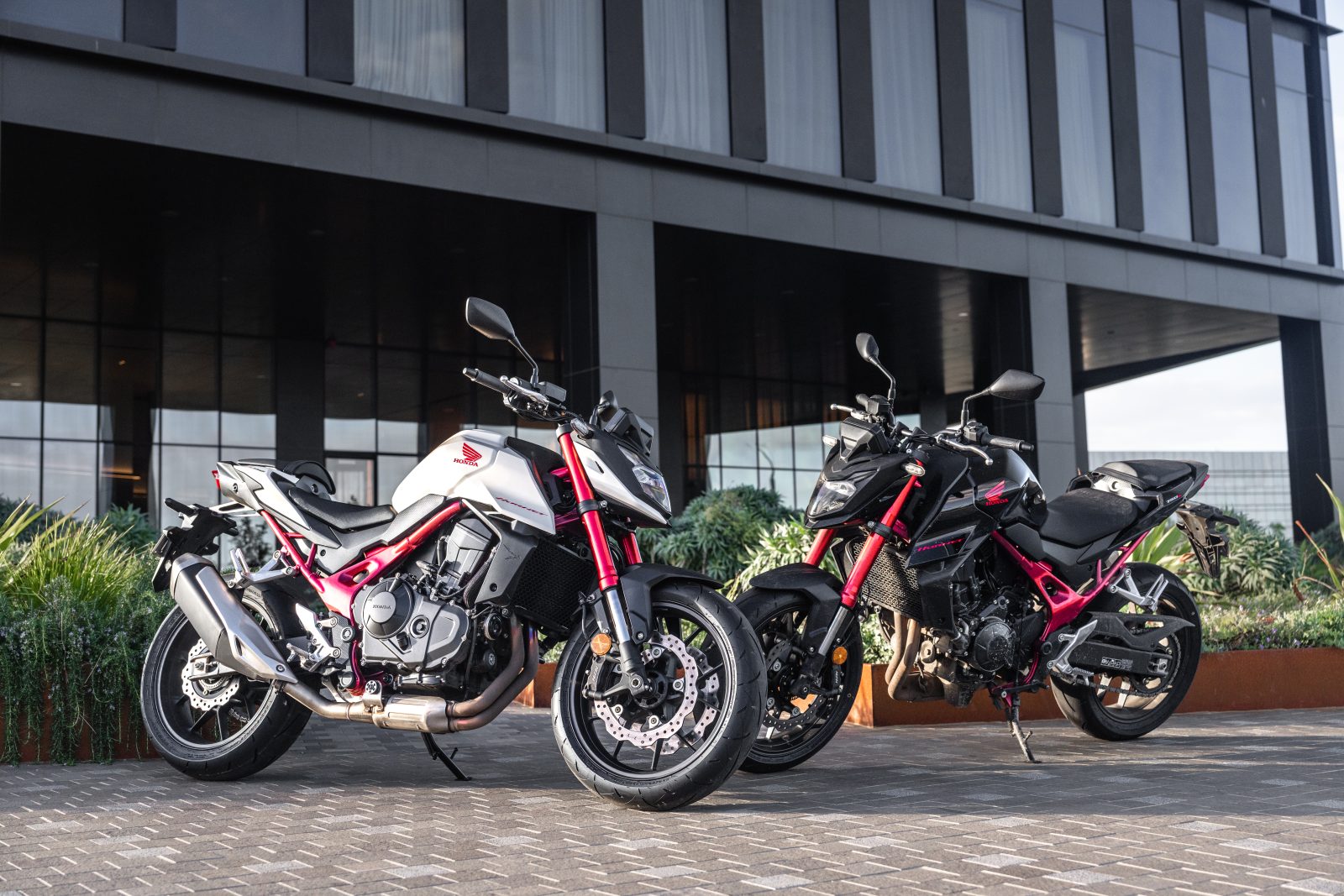
Honda has also scavenged for further friction reduction with the use of a Ni-SiC (Nickel-Silicon Carbide) coating on the 87mm bore cylinders.

Like any parallel-twin worth its weight, the Hornet features a 270-degree crankshaft which provides an uneven firing order resulting in V-twin-like character and a pleasingly lumpy exhaust note. Unfortunately, the two-into-one Euro 5-compliant exhaust doesn’t let that note escape in a meaningful way, so if you want it to sing you best start searching for a saucy exhaust.

The primary drive gear also spins the Hornet’s balance shaft, eliminating the need for a balancer drive gear to help keep the bottom-end compact.
Power is pushed through a slip-and-assist clutch and six-speed gearbox, however you’ll have to shift old school unless you opt for the optional bi-directional quickshifter.

Fuel from the 15.2-litre fuel tank is spat into Honda’s PGM-FI electronic injection system, with air smashed into the combustion chamber via a pair of downdraft intakes.
Now, some people are bitching that the CB750 Hornet should be a four-cylinder machine because, well, because Hornets have always been four-bangers. Well, it’s not, it may never be again, and it doesn’t matter. Whatever Honda’s reasons for going down the P-twin route the new engine is a cracker, and sorry Hornet history buffs but the new engine is a better road-going concern than the oldie. And, this is going to burn, but the new Hornet would give your old 600 four a run for its money.

The old 599cc Hornet of the late 90s produced a claimed 71.1kW (96.7hp) of power at 12,000rpm, 65.6Nm of torque at a heady 10,000rpm and had a claimed wet weight of 198kg. The new 755cc parallel-twin makes a claimed 67.5kW (91.7hp) at 9500rpm, 75Nm of torque at 7250rpm and weighs in at a claimed 190kg wringing wet.

There’s more than enough power on deck to cruise at highway speeds, and the engine is friendly enough for commuting – it’s a great all-rounder. Midrange is king on the $12,099 (plus on-road costs) Hornet. Once you get it spinning above 4000rpm it really starts to motor, and there’s enough poke to send the front wheel skywards in third gear with a flick of the cable-operated clutch.

The twin is nicely balanced with no buzzy vibes throughout the rev range – it feels refined without being devoid of character. All in all, the Hornet’s donk is the centrepiece of Honda’s new machine, and the company has certainly done an excellent job with its new mill.
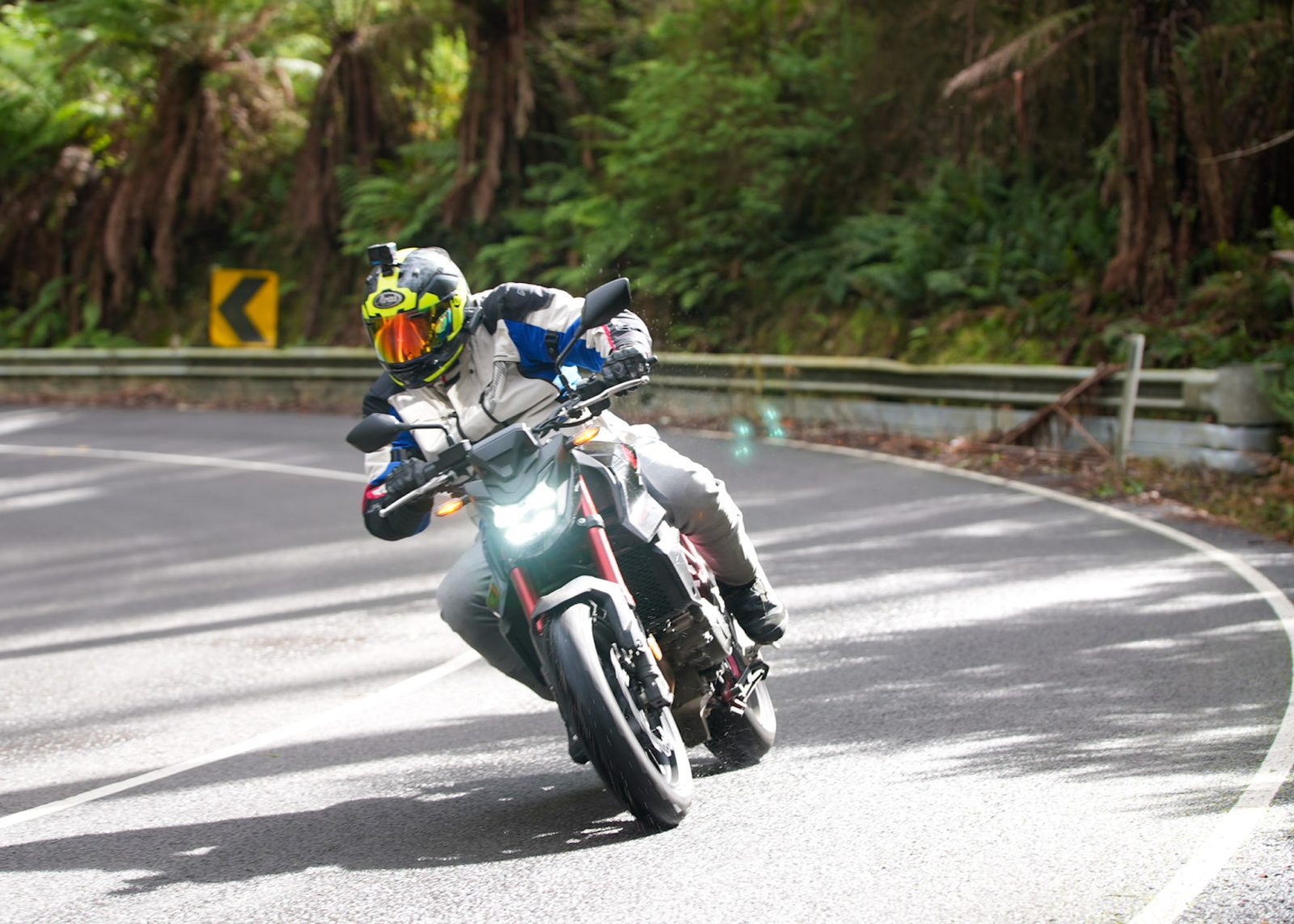
One of the areas where the Hornet trumps its main opposition and the segment king is in the electronics department. The Hornet has four riding modes: Sport, Standard, Rain and a User mode, which allows you to adjust the three-level traction control with integrated wheelie control, the three-level power output, and three-level engine braking adjustment.

Each ride mode ultimately delivers the same peak power, with the difference being in the way the power is delivered. While I did flick between the ride modes to see what each was like, despite the wet conditions I spent most of my time in User mode with power on full, engine braking on the second of the three settings and traction control turned off. Even with power at full it’s a very tractable power delivery with the rear only moving around a few times when exiting corners.
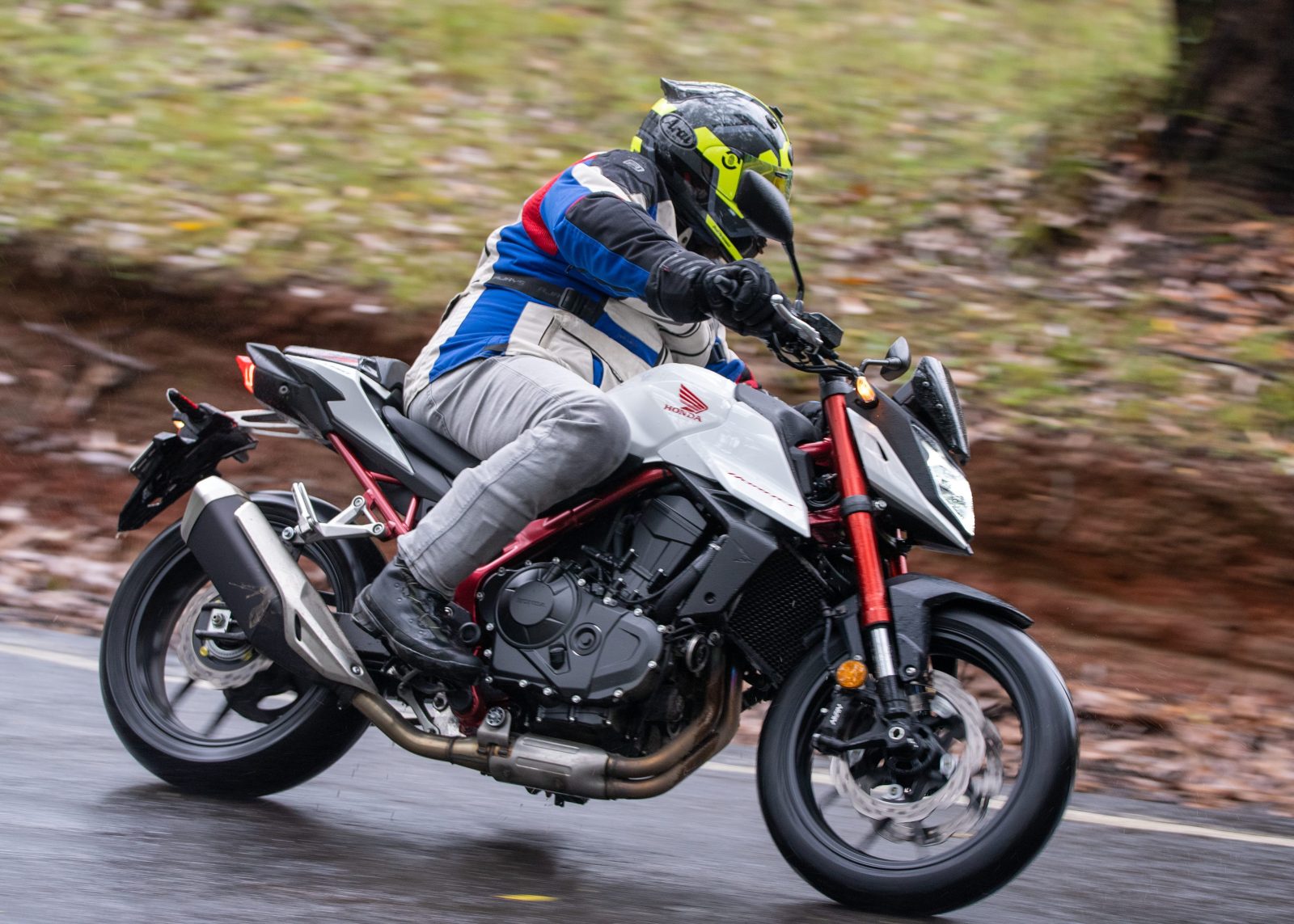
My only criticism of the power deliver is that the throttle is a bit trigger happy when winding on from a closed throttle. It’s not terrible but a tad more of a progressive transition from closed to open would be nice.
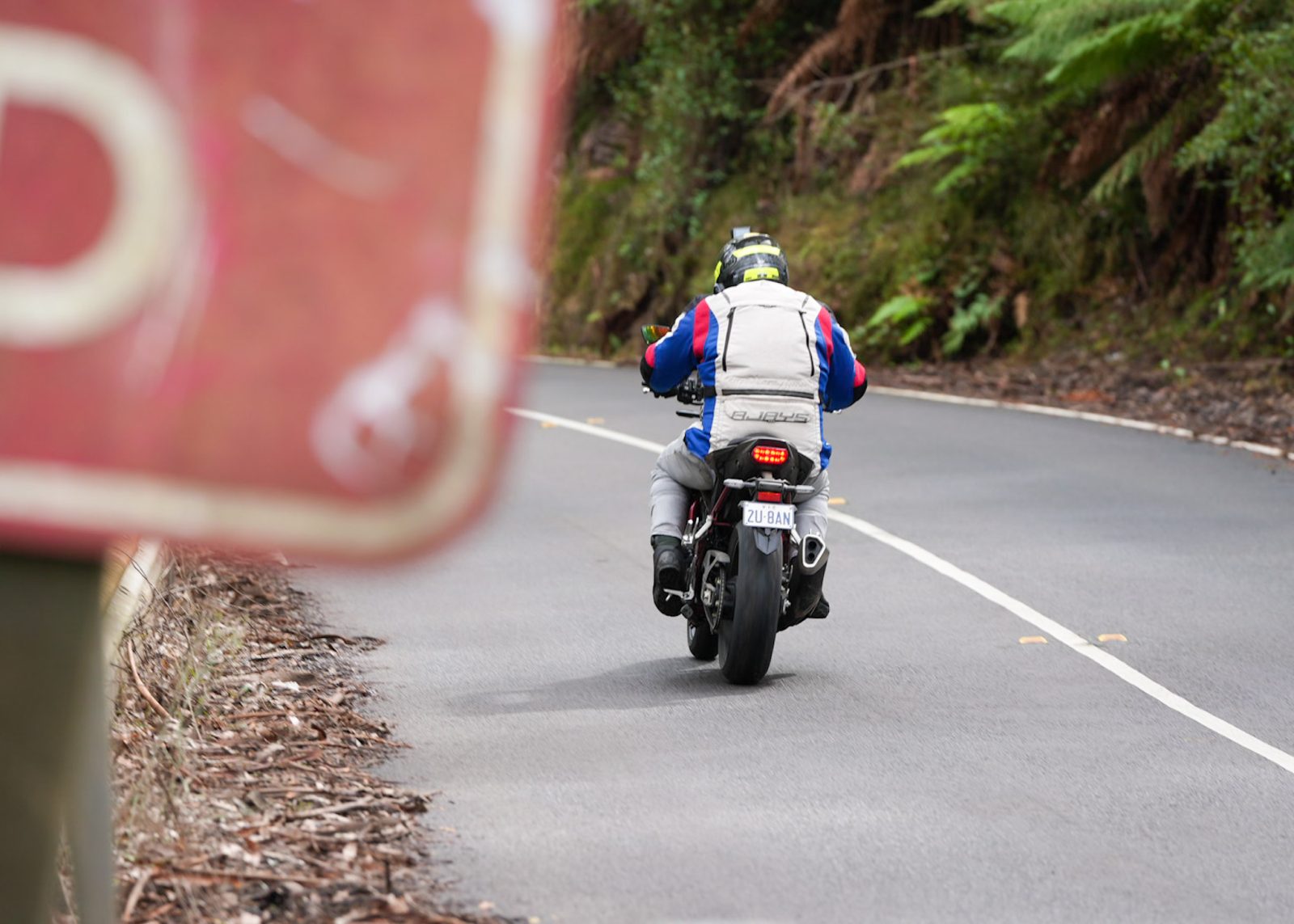
Rain mode really strangles the bottom-end and, with the tractability of the engine and traction control system there to back you, you’re pretty well looked after in even the slickest conditions.

The engine sits in a steel diamond frame with a non-adjustable Showa 41mm Separate Function Fork Big Piston (SFF-BP) fork on the front that offers a pressure-separation damper in one leg and a spring mechanism in the other, while there’s a preload-adjustable monoshock connected to a steel swingarm down the back-end. The fork is bang on the money: supple without being soft, there’s no big dive under brakes and, unless you have special needs because you’re a super-fast rider, or you fall on either extremity of the scales, there’s little need to stuff around with tuning even if it were available. And really, how many riders who are in the market for a cost-effective, mid-capacity parallel-twin are going to stuff around with suspension settings?

My seat-of-the pants assessment says that the rear is softer than the front and, with my chunky arse on the 795mm pew, the rear-end sits lower than I’d like. I didn’t have time to play with the preload settings on the launch, and setting the static sag should be on everyone’s to do list, but in standard form the monoshock offers a plush ride and the squat in the rear facilitates cool wheelies.

The Hornet is a nimble handler, which doesn’t come as a surprise considering its relatively aggressive 25° rake and 99mm trail measurements. I was really impressed with how easy the CB changes direction: it’s spritely without being twitchy and it’s very stable under heavy braking, helped no doubt by the slipper clutch which means you can get the Hornet all sorted before tipping into a corner.

But it’s not a completely glowing report card in the handling department, although my whinge comes with a disclaimer that you should keep in mind. My gripe is a lack of feel from the front-end. I felt a disconnect between what the front tyre was doing and feedback through the handlebar. This can sap a bit of confidence, especially in the slick conditions I rode in, and I never really felt comfortable or confident with the front-end when the bike was on the edge of the tyre.
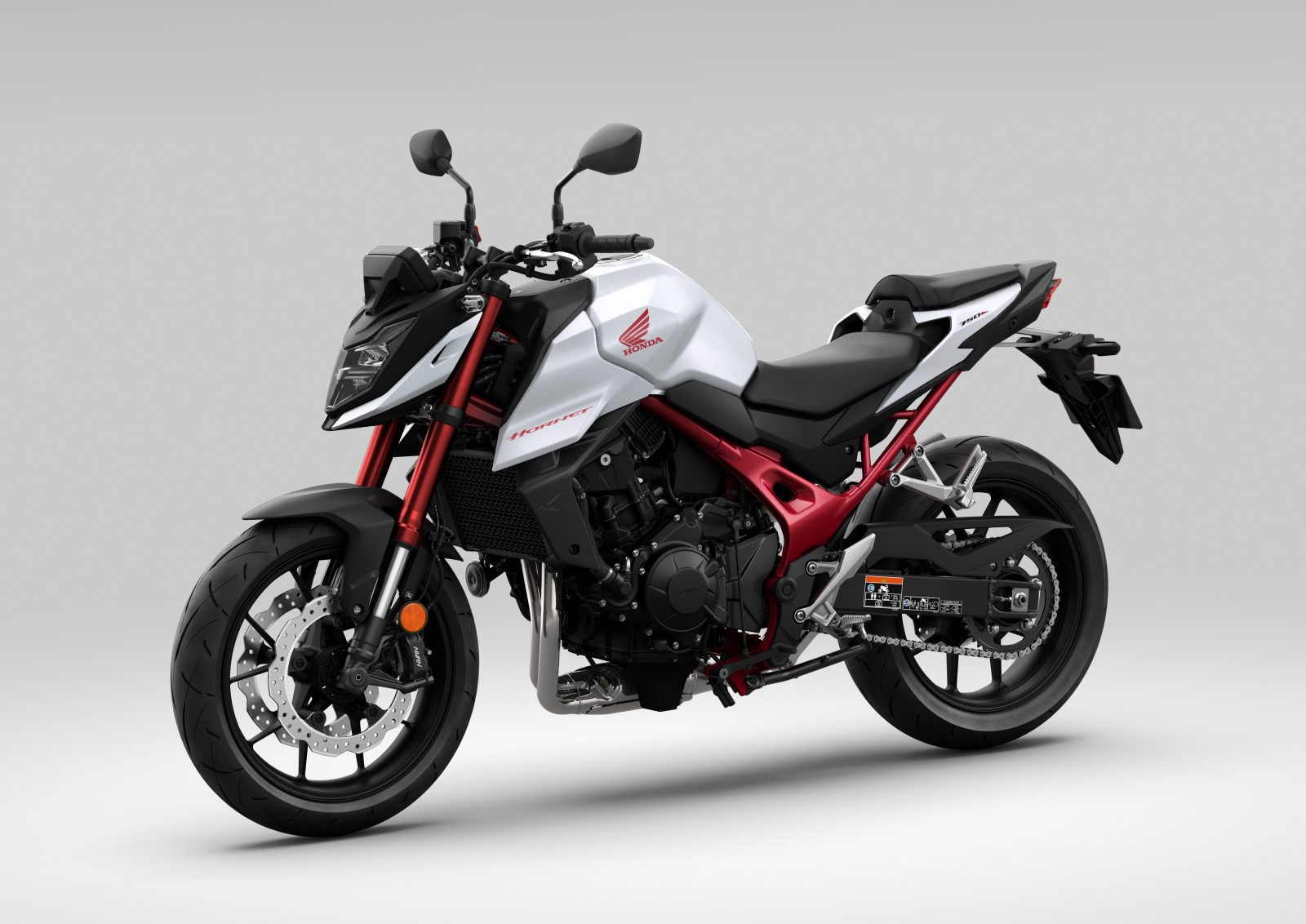
The disclaimer? There are actually two. Firstly, as I mentioned, I’m a big lad which means the rear of the Hornet was sitting lower than it should, taking a bit of weight off the front. Secondly, and the most important of all, is simply tyre choice.
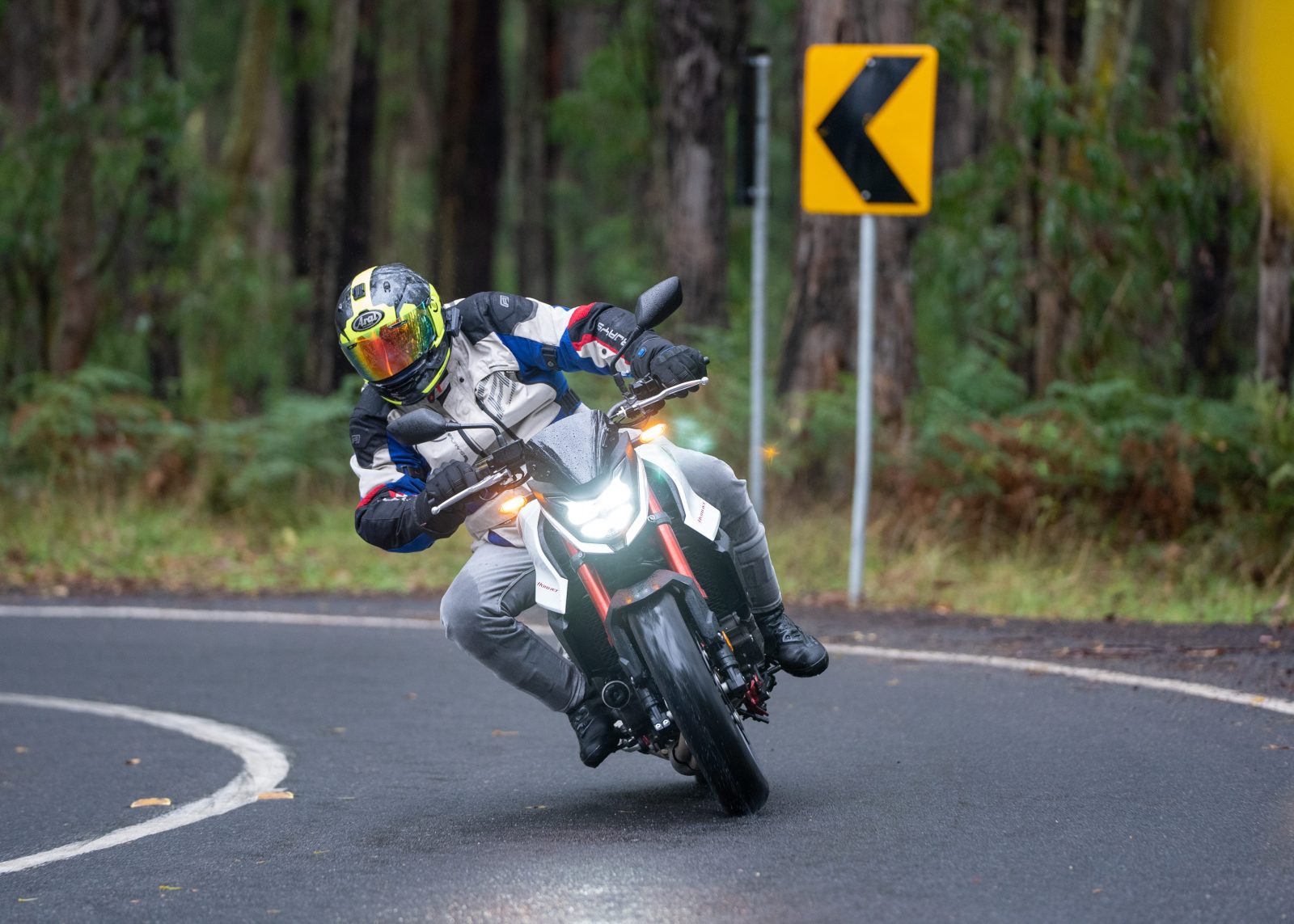
The Hornet will come supplied with either Michelin Pilot 5 or Dunlop Roadsmart 120/70ZR-17 and 160/60ZR-17 rubber wrapped around cast aluminium wheels. My recommendation is, if you’re an all-weather rider, go with the Michelins. On my first stint I was on a white version of the Hornet which was shod with the Roadsmarts, and the lack of feedback coming from the front tyre was obvious… and off-putting. Initially, I couldn’t finger the Dunlops for the blame, but after switching to a Michelin-shod black Hornet there was a noticeable improvement in front-end feel in the wet which, as I’m sure you can guess, gives one a lot more confidence in soggy turns.
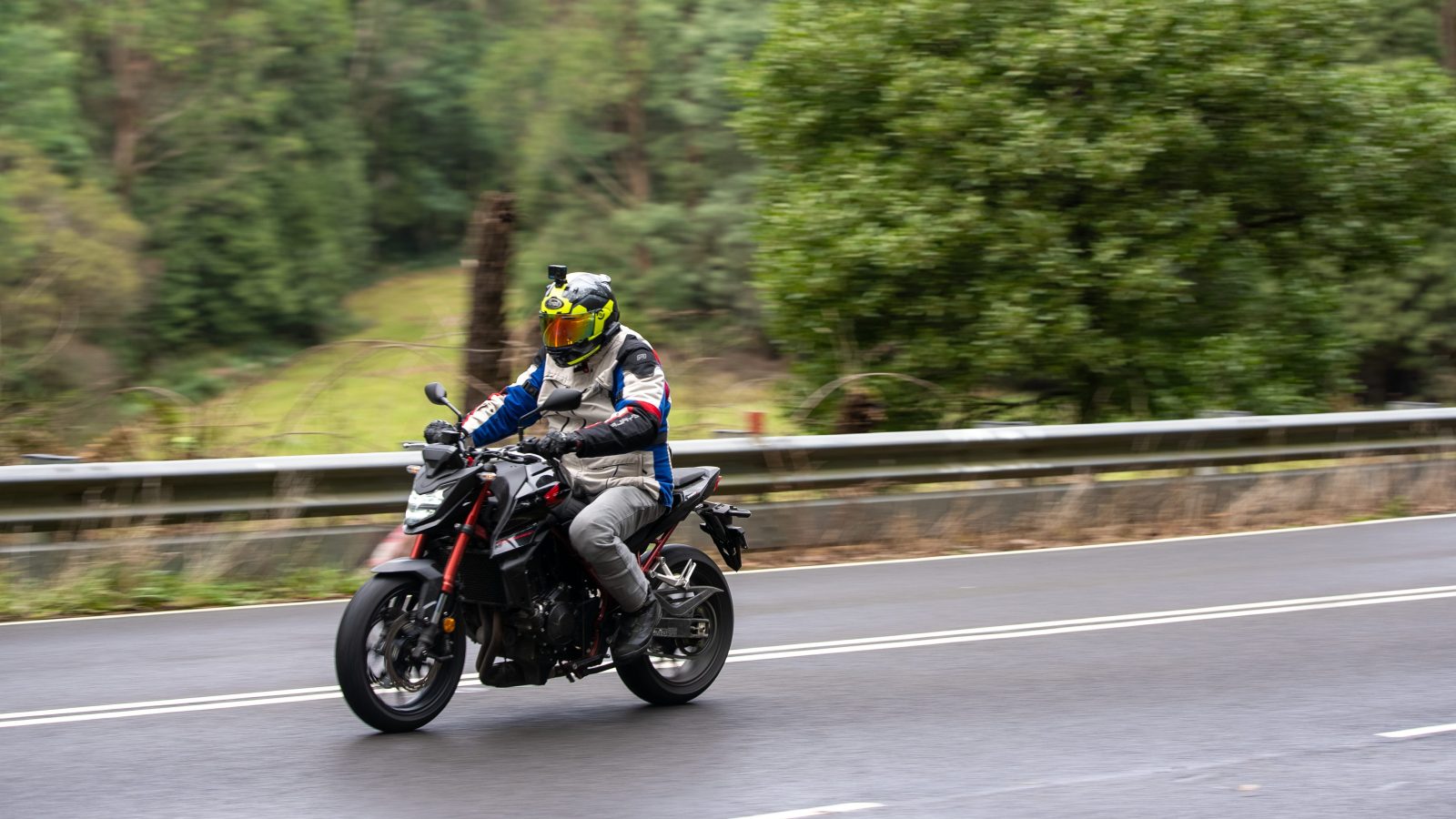
It didn’t fix the issue, but with some suspension setup and the Michelins fitted I’m confident I could resolve it.
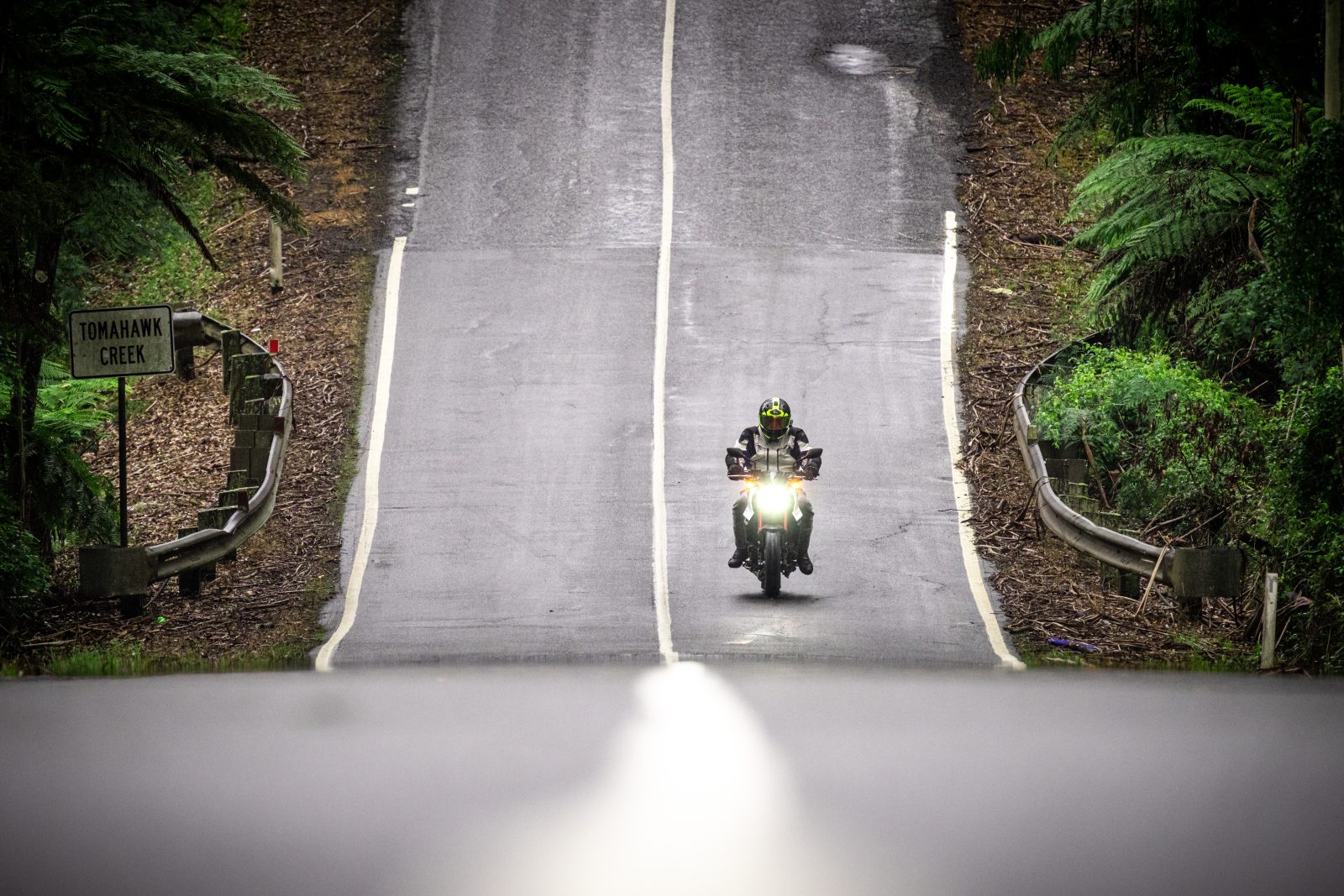
In the name of transparency I spent very little time riding dry roads on the Pilots and no time on the Dunlops in dry conditions, so the Dunlops could be streaks ahead in the dry for all I know. If you’re in the market perhaps you should try both.

The Hornet is pulled up by an excellent braking system with dual 296mm discs on the front matched to a set of Nissin radial-mounted four-piston calipers, and the rear comes with a 240mm disc with single-piston caliper. Both ends are fantastic, with the front being at the upper end of fantastic: bulk power, plenty of feedback from the span-adjustable lever and, even with ABS, stoppies are on the cards if you’re feeling naughty. The rear is perfect at what it does: feeling progressive and giving enough feedback through the lever that I could rely on it to pull the Hornet around a corner even in the slick conditions I encountered without fear of locking.

Rounding out the big news stories for the new Hornet is a bunch of neat features that really push the Honda further up the value-for-money scale.
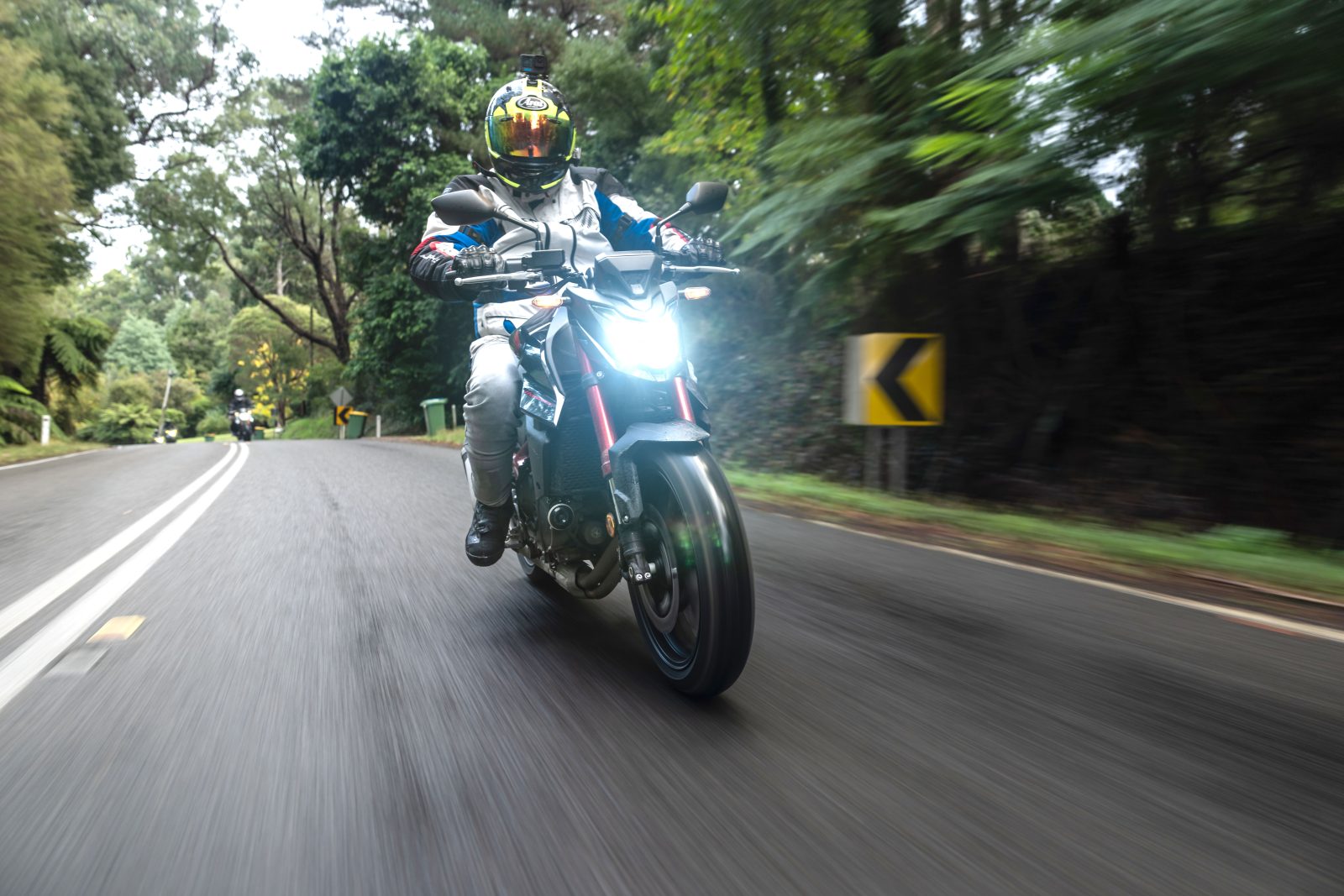
There’s a five-inch TFT colour display that is clear and easy to read from any angle and, while there’s a fair amount of information available on the three screen layouts, the characters are small and hard to read.
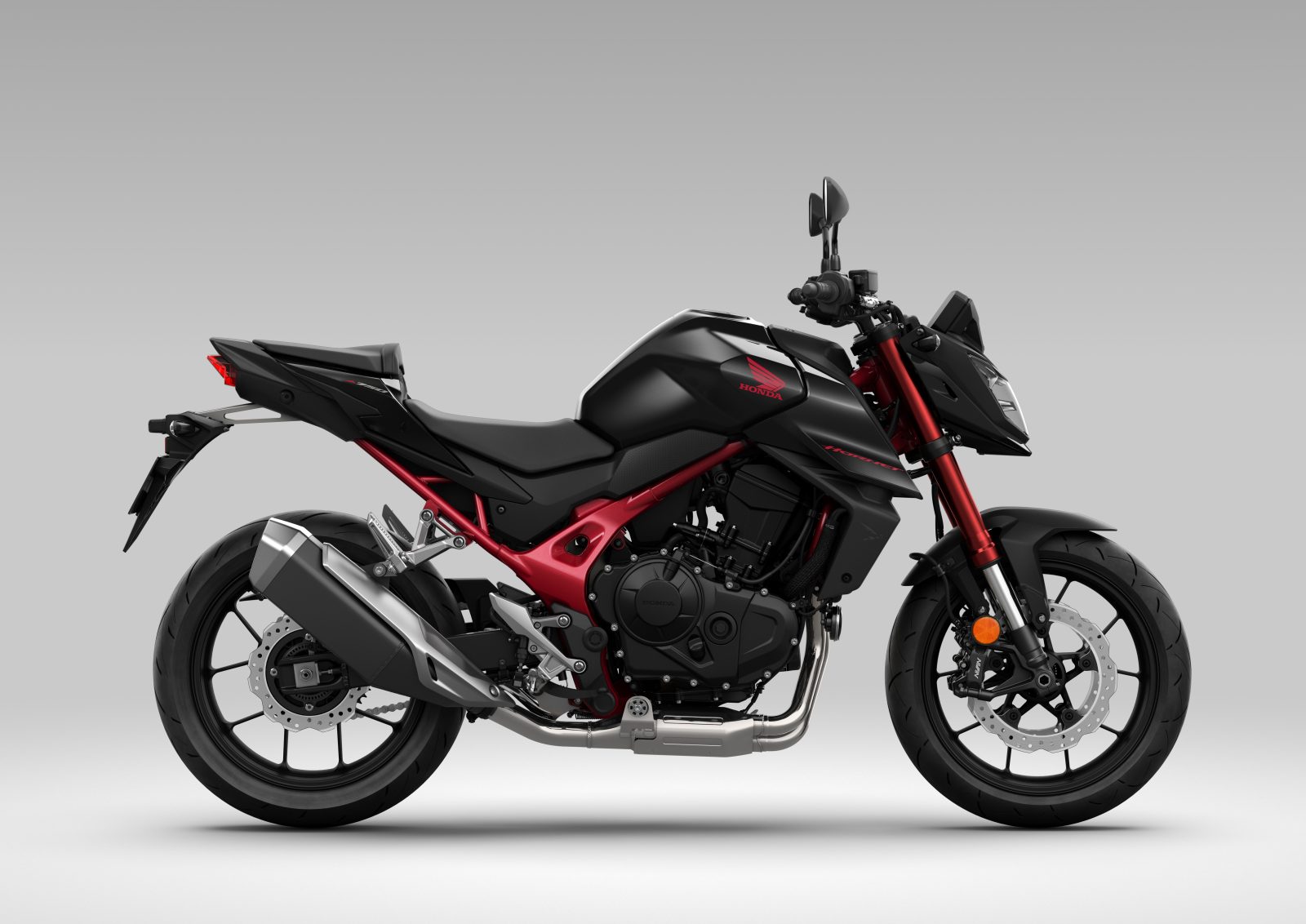
The dash is equipped with Honda’s Smartphone Voice Control system that’s compatible with both Android and iOS devices, and allows you to connect with your phone via Bluetooth for voice management of phone calls, messages, music and navigation if you have an intercom system connected to your phone. If you don’t want to use voice commands, the system can be navigated via the left-hand switchblock that also controls the rest of the on-dash features.
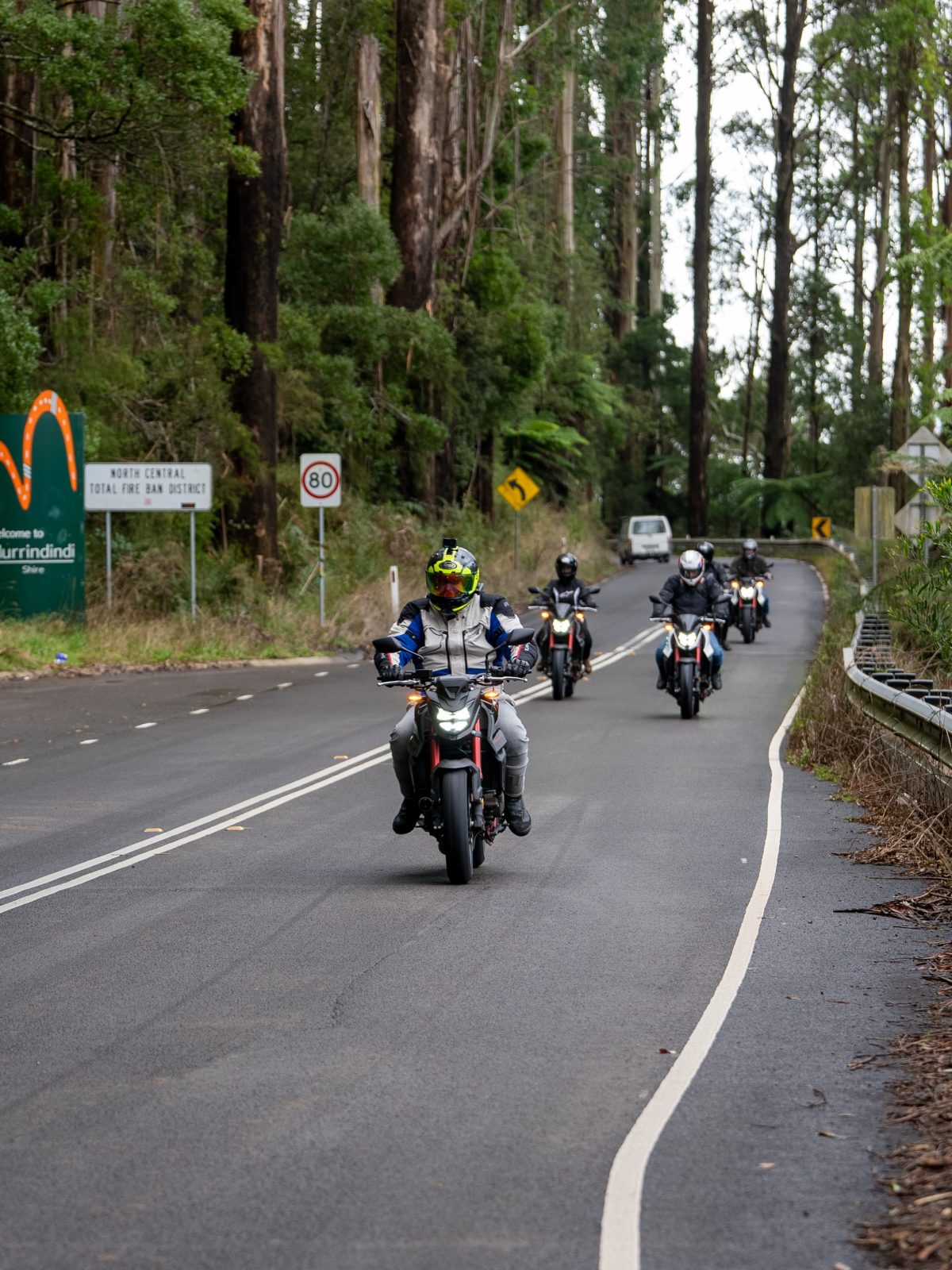
There’s also a full LED lighting package with self-cancelling indicators and Emergency Stop System that flashes the indicators when you get heavy on the picks.
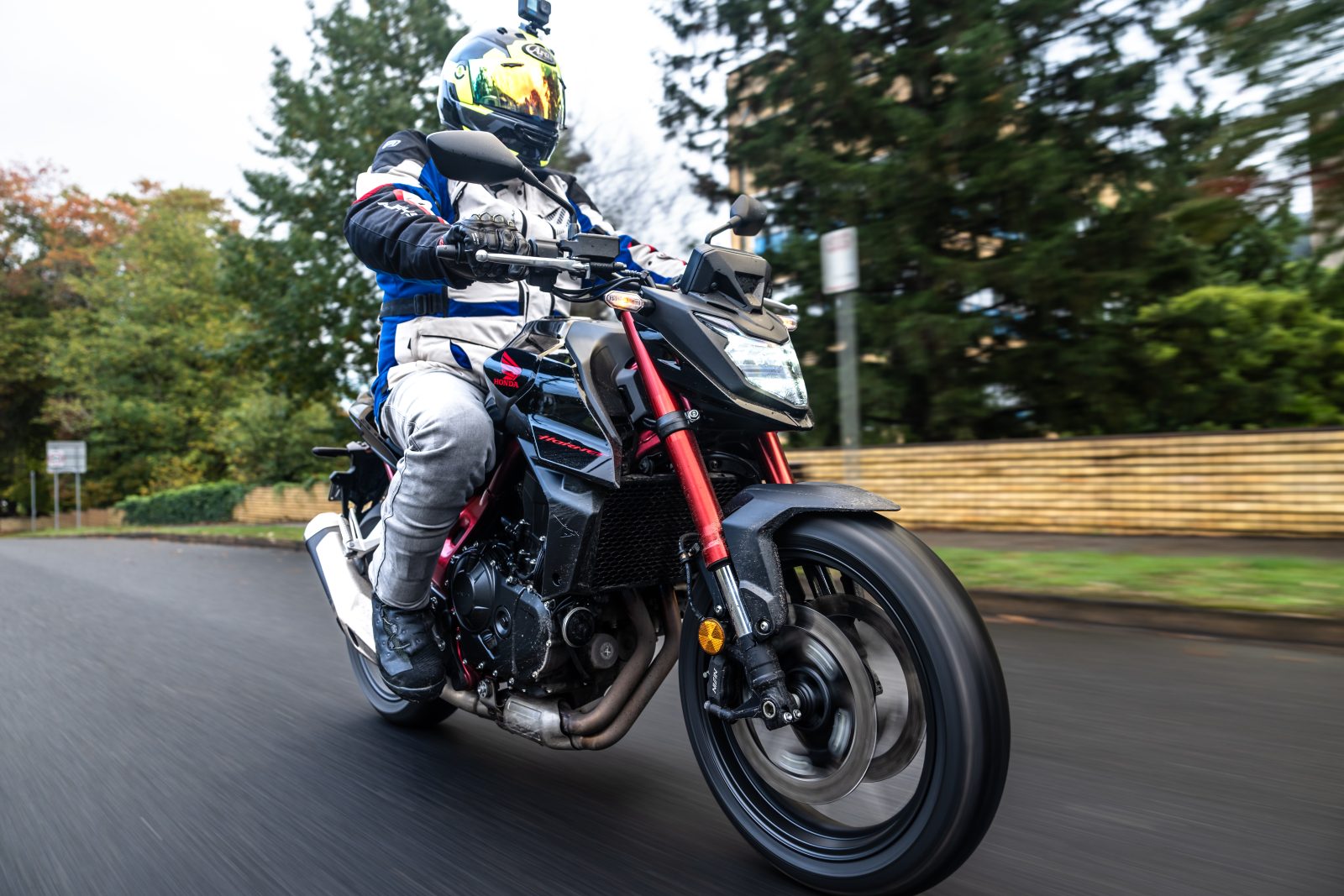
Fit and finish is excellent in typical Honda style and the anodised fork looks pretty cool – but the burgundy frame colour that tries to match the fork not so much.
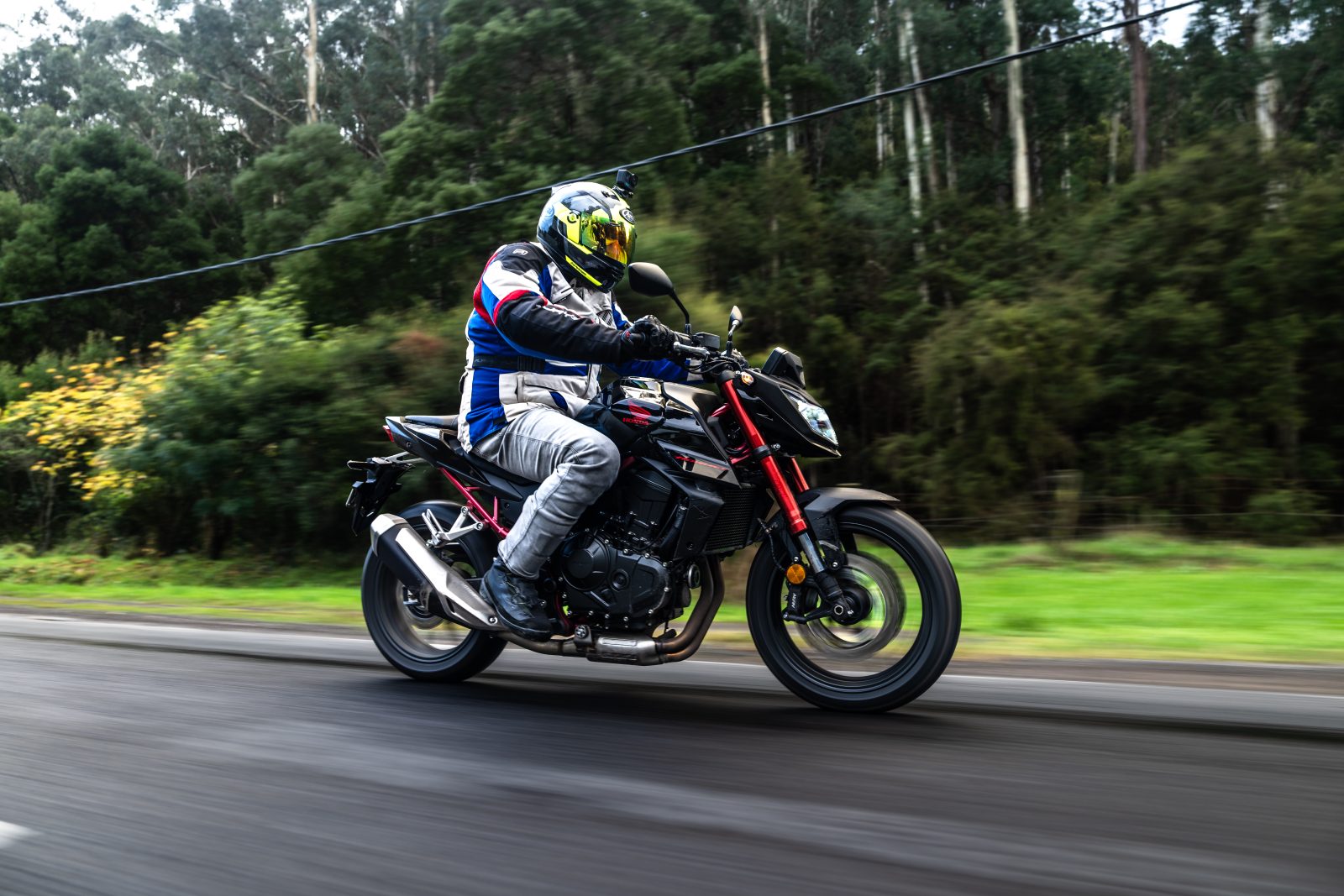
Purists will say that a Hornet should be powered by an inline four-cylinder engine, like the old 600cc and 900cc versions of the past, but that’s never going to happen so it’s best you get over it. But for those aren’t living in the past and who just want a good, reliable, well built and fun machine, then I reckon the Hornet has stolen the segment crown from Yamaha’s MT-07… and up until now the MT is one of the most fun bikes going around.
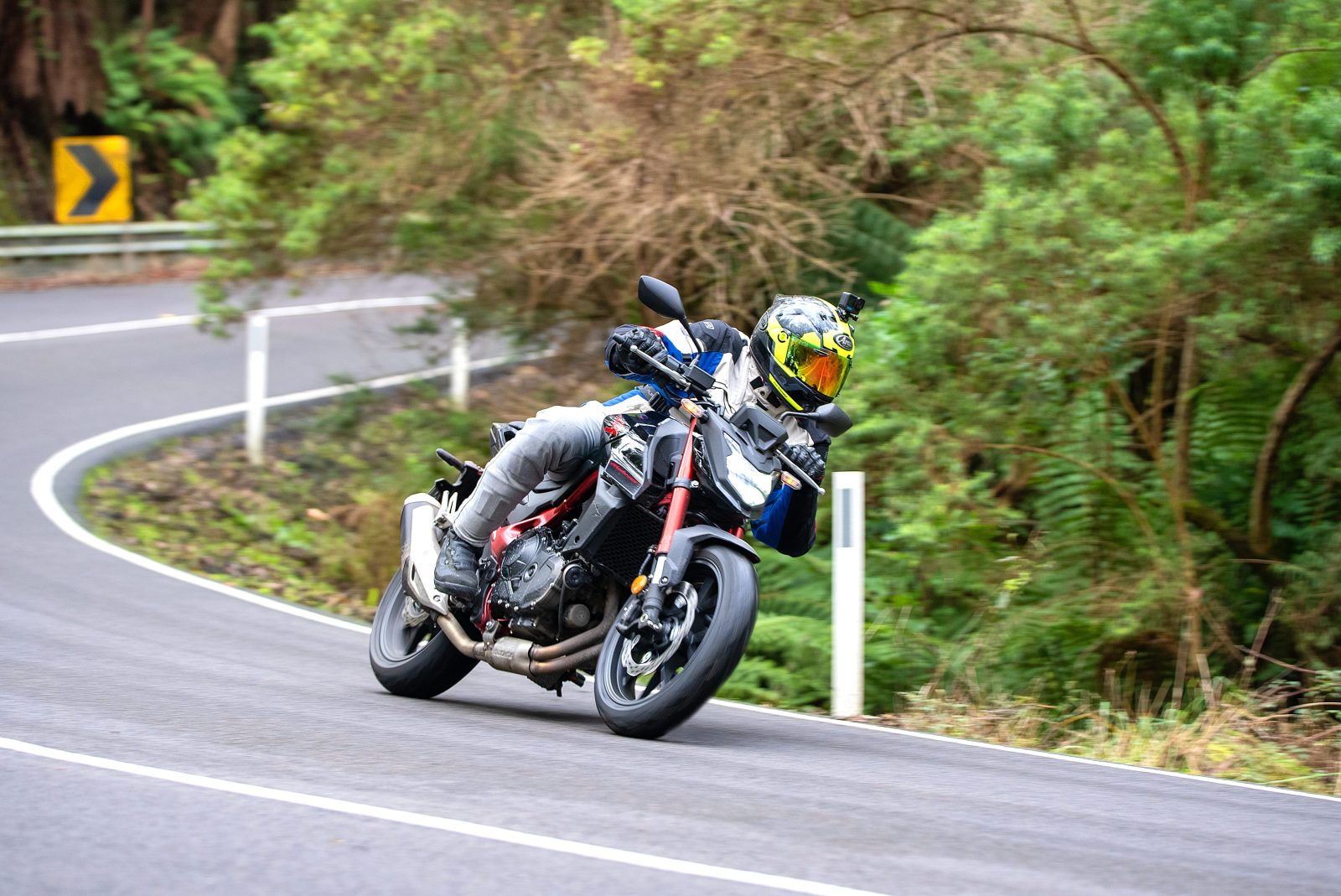
Honda has done a good job with the Hornet; I honestly wasn’t expecting to enjoy it as much as I did, especially when it started belting down rain, but I had a ball on it and I’m really looking forward to having another go in dry conditions.
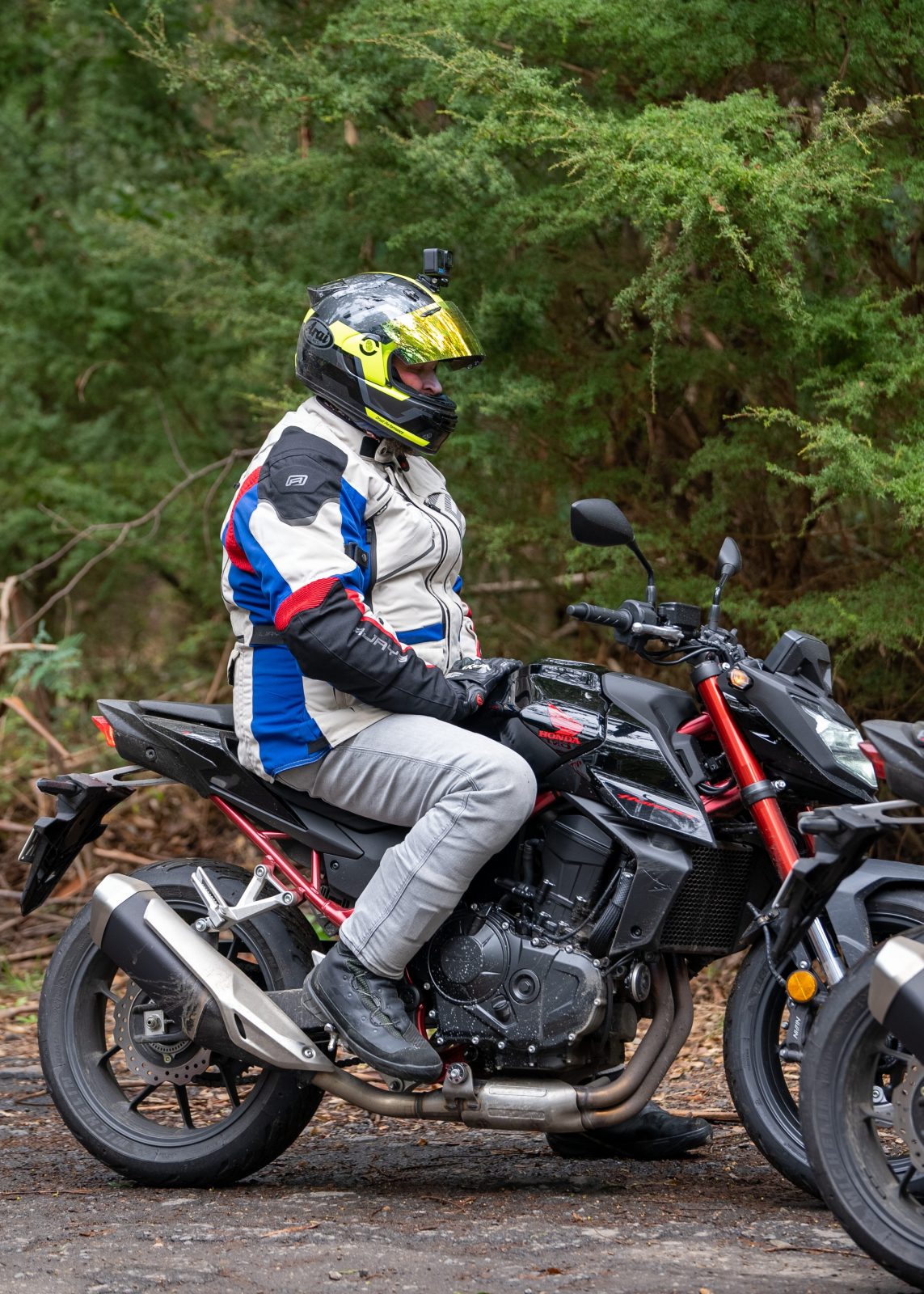
The Hornet is a fantastic commuter that is absolutely capable of hitting the highway for a weekend trip or heading up to your favourite bike road where you could really upset some riders on bigger and more expensive machines.
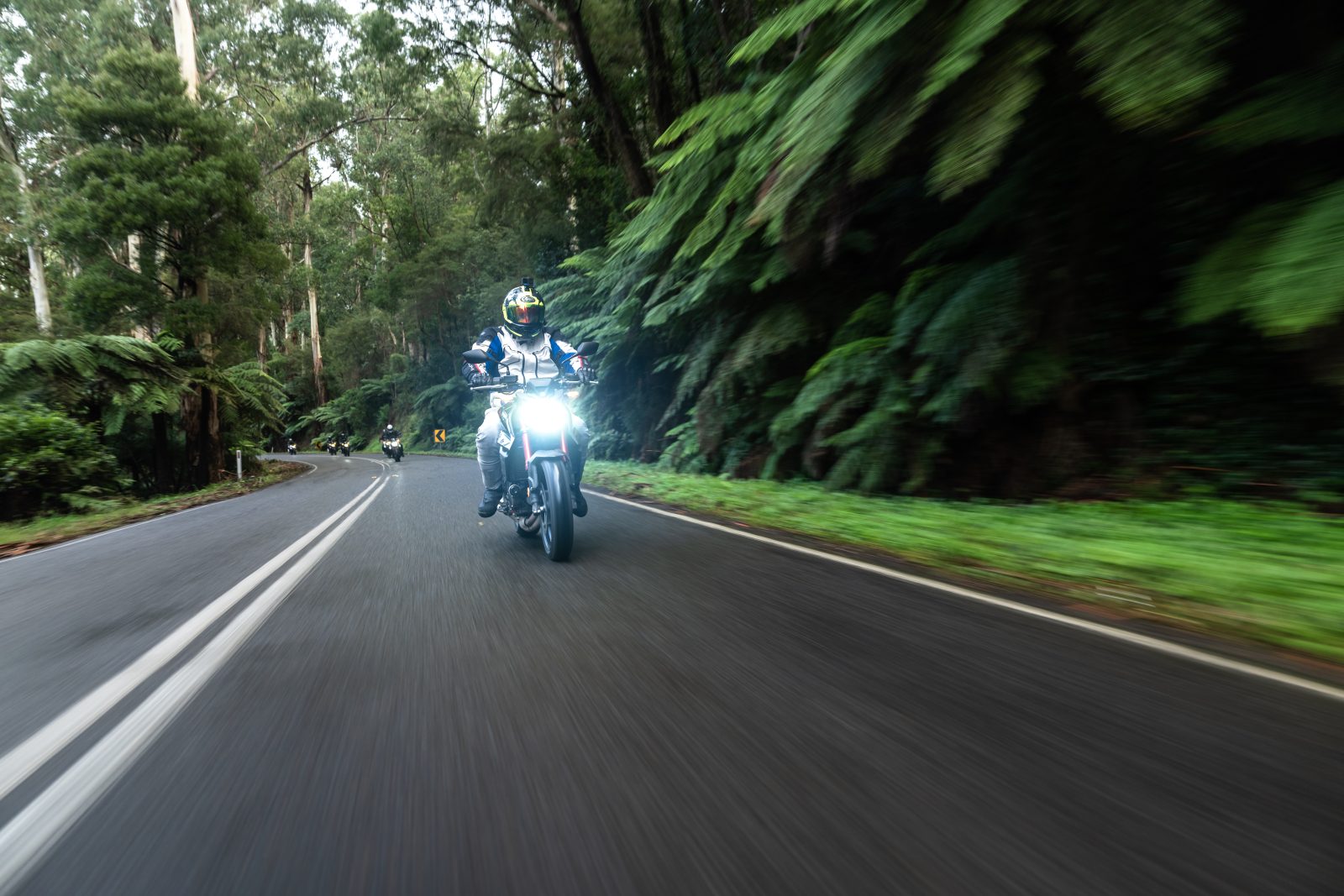
It’s comfortable, well built and, most important of all, it’s damn fun to ride… and that’s why we ride bikes, isn’t it?
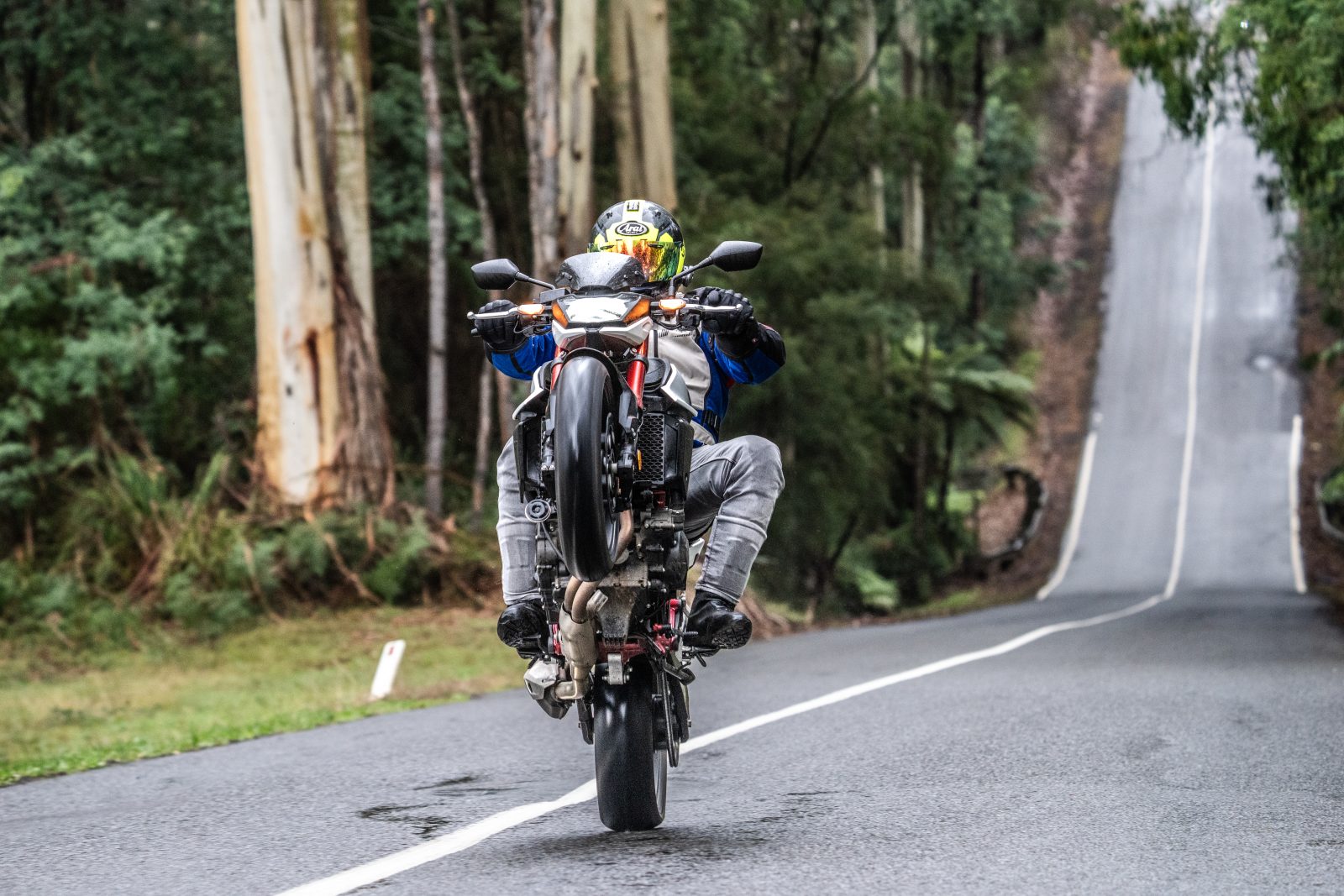
TEST: PETE VORST PHOTOGRAPHY HABERDASH PHOTOGRAPHY & JTS MEDIA











